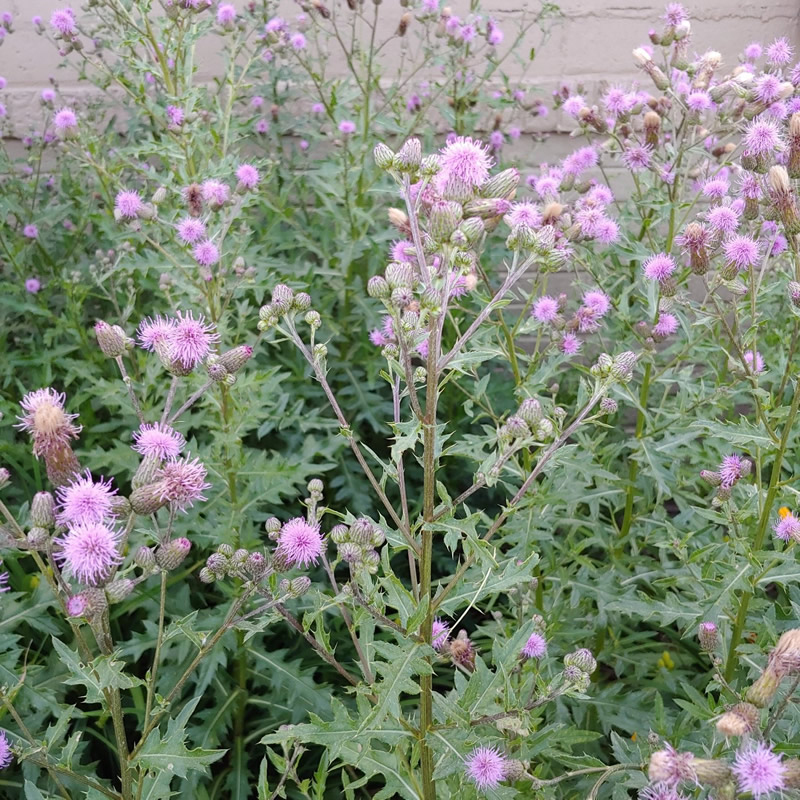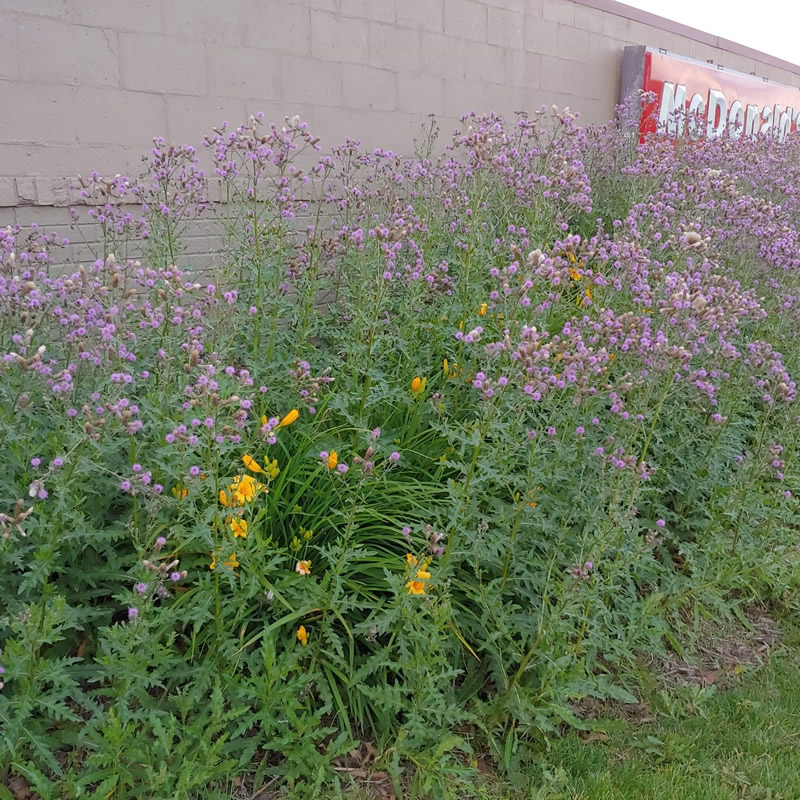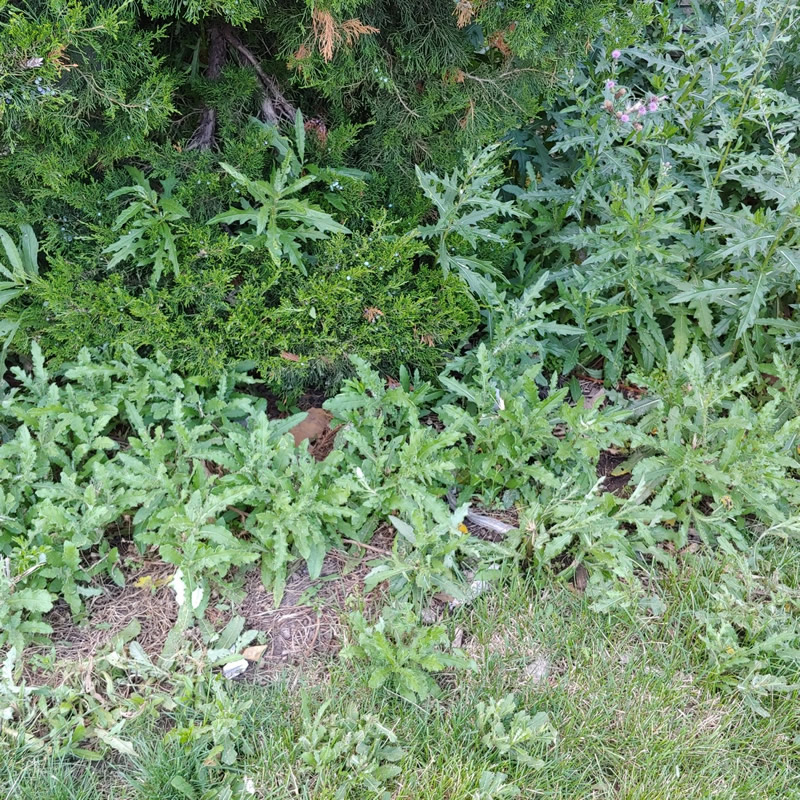Issue 8, July 29, 2021
Noxious/Invasive Plant Species – CanadaThistle, Cirsium arvense in Illinois
There are many species of thistle – bull, musk, yellow, scotch, tall, yellowspine, and others – but Canada thistle stands out as one that is noxious (and obnoxious). A noxious plant is one that “harms agricultural lands, poses harm to humans, resists chemical controls, clogs waterways and ponds, displaces native plants, and alters soil composition”. Many noxious/invasive species have been introduced from other countries. Some species find conditions in a new country even more conducive for growth than the plant’s country of origin. In addition, insects, diseases, and other natural controls that helped keep plants in line in their home country were not always relocated with the plant.
Canada thistle is a cool season perennial that actively grows in the spring and fall. It produces flowers very early in summer, usually in early to mid-June. Growth slows during hot weather. By early July, seeds are fully developed. This can vary depending on the year's growing conditions of course. Above-ground portions can be killed by frost. Brown, erect stems may persist into the winter.

Canada thistle in bloom, Michelle Wiesbrook, University of Illinois.
In some states it is actually a misdemeanor to have these plants on your property and not kill them. In 43 states (including Illinois), Canada thistle is listed in the noxious weed law, meaning that its control is required by law. So, if Canada thistle is growing on property that you own or manage, you are required to control it. However, because this law is poorly enforced, more and more Canada thistle continues to establish in pastures, lawns, gardens, crops, meadows and along roadsides.

Canada thistle dominating a landscape bed, Michelle Wiesbrook, University of Illinois.
- Canada thistle management methods include:
- ensuring that it is mowed before it forms seed
- Post-emergent applications of a systemic herbicide may be used. Fall is typically the best time for these treatments. Other good times are during the early bolting stage when plants are 6-10" tall and during the bud to flowering stage. In lawns, some herbicide options are 2,4-D, MCPP, MCPA, dicamba, triclopyr, carfentrazone, and quinclorac. Clopyralid is quite effective on thistle. Non-selective herbicides such as glyphosate may also be used.
- actively digging up the roots as deep as possible – it grows like asparagus, has a dense root system from where new shoots sprout
- if an area is densely populated with Canada thistle, plant a fast-growing tall annual like sorghum; Canada thistle is a poor competitor for light, and gets smothered; mow the whole place down, re-plant with sorghum, and repeat the cycle again for a period of 2 to 3 years.
- lawns kept in good condition promote healthy, dense turfs that compete well with weeds.

Canada thistle spreading from a bed to turf, Michelle Wiesbrook, University of Illinois.
Perhaps your site is not a lawn but instead a landscape bed. Many of these products are not labeled for this use due to the variety of species present. Be sure that the product you use is labeled for the intended area. Often times, careful spot treatments of non-selective herbicides are your only chemical option. Nearby sensitive plants may be covered with plastic prior to application. The plastic may be removed as soon as sprays dry. Applications may also be painted on using a brush or sponge. Be sure to read and follow all label directions carefully. Realize that multiple applications may be needed to eradicate this weed.
Authors:
Michelle Wiesbrook
James Theuri